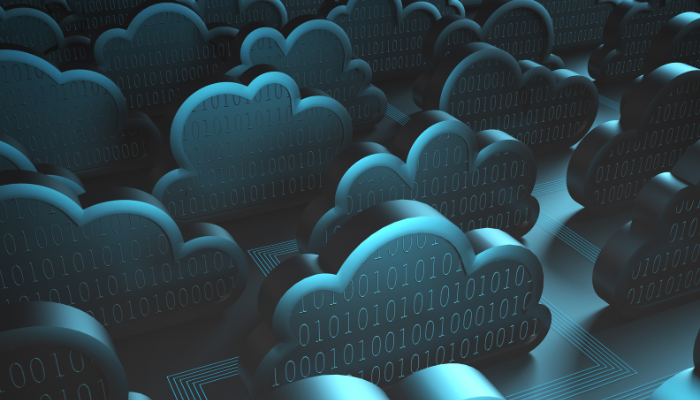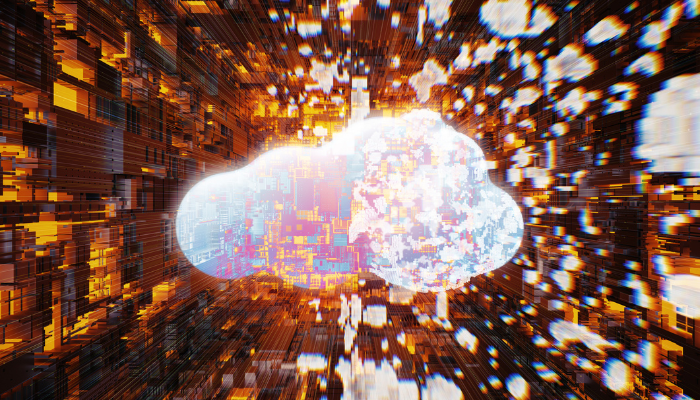This year will be an exciting one for New Zealand organisations who have invested in the cloud. It is now recognised as essential for supporting and delivering the capabilities needed to fuel effective IT projects. Businesses are motivated by security and resilience, business and operational excellence, and the desire to support an increasingly complex landscape of IT assets, IDC finds.
Artificial intelligence (AI) is being recognised as a catalyst technology that will drive business outcomes. Gartner predicts AI will be the most implemented technology in New Zealand by 2025, with cybersecurity and business intelligence/data analytics as the top investment areas.
As organisations navigate an ever-changing future, leaders from CCL and Leaven provide their insights on the key technological advances to expect in 2023 and beyond.
Prediction 1: Hybrid and multi-cloud strategies will accelerate with greater desire for app modernisation
Hybrid and multi-cloud use will continue to grow in popularity with greater use of cloud-based app modernisation and related tools.
Organisations will adopt multi-cloud and hybrid cloud strategies not only to achieve greater flexibility, modern ways of working, scalability, and cost-effectiveness in their cloud infrastructure, but also to address growing concerns around data privacy and security. Multi-cloud refers to using multiple cloud platforms and services from different providers. In contrast, hybrid cloud involves using multiple cloud environments, including on-premises infrastructure and private and public cloud environments. With the growth of multi-cloud and hybrid cloud strategies and easier entry for cloud-native and serverless computing, companies will have more options, allowing them to tailor their cloud infrastructure to meet their specific needs and requirements.
App modernisation is becoming a key focus for organisations as they seek to meet the growing demand for digital transformation and the move towards cloud-native architectures, using hybrid cloud environments. Using hybrid cloud, organisations can find a better fit than posed by fully embracing the public cloud. The mixed-cloud nature of hybrid cloud provides a uniquely flexible and scalable environment that also offers control over data and infrastructure. So, organisations may use private cloud for handling sensitive data and workloads, while leveraging public cloud for burstable workloads or testing and development. Managed hybrid cloud provides a more simplified and streamlined approach to app modernisation as organisations can modernise at their own pace.
Some key tooling areas are important in supporting modern app development. One is containers – for packaging software and dependencies to run consistently across different cloud environments – and Kubernetes – for automating and scaling container management. This is enabling mobility between multiple endpoints, which reduces the time and effort required by organisations to manage their complex application infrastructure. Another is no-code and low-code tooling, used to enable non-technical users to build software applications quickly and easily, often without the need for deep technical expertise or extensive coding.
Prediction 2: Edge computing will transform and accelerate AI and data use
Edge computing will improve cloud efficiency and reduce the power required for real-time data processing.
Edge computing is set to transform cloud AI and data processing. Edge computing allows organisations to process and analyse data closer to where it is generated, reducing latency and increasing the ability to operate autonomously. This means more tasks that previously relied on centralised data centres or cloud environments can be performed with greater efficiency and reduced power requirements.
Edge computing is particularly beneficial for real-time data processing and analysis applications like IoT devices and autonomous vehicles. By bringing compute power and data processing closer to the source of the data, edge computing helps to improve the performance, speed, and reliability of these applications. The increasing use of edge computing is leading to improved computer vision and AI capabilities, with battery or solar-powered edge devices having 10-15 times the computing power of mobile phones. This is paving the way for new and innovative use cases that were not previously possible with traditional cloud infrastructure.
Prediction 3: Augmented, virtual and mixed reality will converge for richer business experiences
Real-world and virtual objects will continue to converge in business, seen most readily in training, education, and product experiences.
This convergence of real-world and virtual objects will become more prevalent going forward, as augmented, virtual and mixed reality are increasingly integrated in business. This will enhance the richness of training and education experiences alongside opportunities for greater product exposure.
The combination of augmented reality, especially computer vision, will also allow for more immediate practical benefits. For example, the real-time identification of hazards on a worksite is enabling more users to operate equipment more safely, with less prior training required. Augmented reality is also helping in the field of medical analysis, bringing general healthcare to remote communities with non-doctors able to now take instructions from doctors through headsets. Virtual forms of hands and eyes are overcoming many of the past barriers to innovation.
Prediction 4: Cloud-based AI and machine learning will disrupt the status quo
Cloud-based AI and machine learning uptake will grow and be more integrated with other business processes, enabling access to advanced and disruptive technologies.
As cloud providers expand their offerings of AI and machine learning services, businesses and organisations will have greater access to advanced AI technologies and capabilities. This enables them to perform and automate tasks more efficiently and make data-driven decisions, linked to wider business context, more accurately. With many benefits for companies, such as scalability, flexibility, and cost savings, more businesses are likely to take advantage of AI and machine learning in the cloud, and the applications for these technologies will continue to expand.
This can be seen with Natural Language Processing (NLP) and Intelligent Robotic Processing Automation (IRPA), which are impacting usual business practice. NLP, which is computer analysis and processing of language, is being readily experienced by many with ChatGPT technology. Content generated by ChatGPT is increasingly able to substitute or even reflect human-generated intellectual property, although systems can be created to indicate whether content is authentic or AI-generated. With IRPA, software bots are used to automate tasks and processes to improve efficiency and productivity helps organisations to reduce waste on routine and repetitive tasks, such as data entry, billing and order processing. AI’s impact is bound to be transformational, and as AI systems become more deeply integrated in business, people will be freed up for more innovation and higher-level tasks.
Prediction 5: Sustainability will be a key focus in tech decisions
Technology choices will be more centred around sustainability as companies make strides to reduce their carbon footprint
One way in which more companies are addressing sustainability is by moving their operations to the cloud. Cloud-based solutions can be more energy-efficient and environmentally friendly than traditional on-premise technology. Cloud providers like Amazon Web Services and Microsoft Azure are investing heavily in renewable energy technologies, and many companies are looking to move their applications to the cloud to take advantage of these benefits.
In addition, more companies are using the cloud to benchmark their performance and govern their processes. By moving their operations to the cloud, companies can more easily monitor their energy consumption and carbon emissions. This allows them to set targets for reducing their environmental impact and track their progress over time. This trend is likely to continue as more companies recognise the role technology can play in driving sustainability and in reducing carbon footprints.
Prediction 6: Cloud, blockchain and other technologies will boost digital trust
Proven technologies will enhance digital trust, security, and privacy, bringing opportunities for growth.
2023 will bring significant advancements in digital trust, security, and privacy, which will open new opportunities for innovation and growth in the digital world. Blockchain adoption will increase confidence in digital information, while cryptography and distributed ledger technology will secure transactions and data, essential for finance across the supply chain.
Cloud adoption will increase across the board as organisations look to safeguard data and privacy, especially by adopting encryption, access control, and auditing capabilities, and adhering to industry regulations like GDPR and HIPAA.
While embracing these trends and investing in the necessary technology and expertise will help remain competitive in an ever-evolving digital landscape, it will also be important for organisations to ensure they have robust cybersecurity measures in place to protect against potential breaches or attacks. As AI data sources and processing techniques widen, there will be increasing risks of bad actors.
Prediction 7: Data optimisation in daily life
Acceleration of data optimisation in business will lead to more personalised, data-driven experiences.
There is an increasing amount of data being collected and presented in new and meaningful ways. Devices and products being used to monitor and collect data across many consumer facets, such as phone usage, sleep patterns, diet, travel, water usage, and exercise, to improve the quality of our daily lives. Using this data, businesses can build decision making models based in real-time insights and predictions to optimise their performance and product delivery. With more businesses using data optimisation, we can expect more personalised and data-driven experiences in our everyday lives.
The use of wearable devices, smart home technologies, and other connected devices is contributing to the growing availability of data. This trend is expected to continue as more devices become connected to the internet, via which valuable insights into our daily habits and behaviours will be more available. Tapping into the value of tech for privacy and data security is an ongoing consideration as organisations seek to reap these ever-expanding benefits of data optimisation.
2023 is shaping up to be a year of ground-breaking advancements. Expect significant progress in AI, cloud environments, mixed reality, and other tech areas. These innovations have far-reaching impact and significant opportunities for all organisations. Now is the time to embrace these trends and position your business for success.
At CCL and Leaven, we’re passionate about sharing our knowledge with businesses that want to make a real impact. So, whether you’re looking for expert advice, helpful guidance, or practical technology pathways, our team is here to help. Stay tuned for more.
Key Terms
| App modernisation |
The process of updating legacy applications with modern technologies, practices and architectures to improve performance and reduce maintenance costs. |
| Artificial Intelligence (AI) |
The simulation of human intelligence in machines designed to perform tasks that typically require human intelligence. |
| Blockchain |
Decentralised, secure digital ledgers that record transactions across a network of computers. |
| Intelligent Robotic Processing Automation (IRPA) |
Using software bots to automate tasks ad processes to improve efficiency and productivity. |
| Natural Language Processing (NLP) |
A branch of AI that deals with human-computer interactions using natural language, with computers able to understand, interpret and generate words. |
| Virtual, Augmented and Mixed Reality (VR, AR, MR) |
Related technologies that create digital immersive experiences for users, overlaying digital content onto the real world, and allowing users to interact with both digital and real-world elements at the same time. |
For more on this topic, please read “Tech Predictions: 2022 and Beyond” and “Do You Have Digital Whiplash?“




